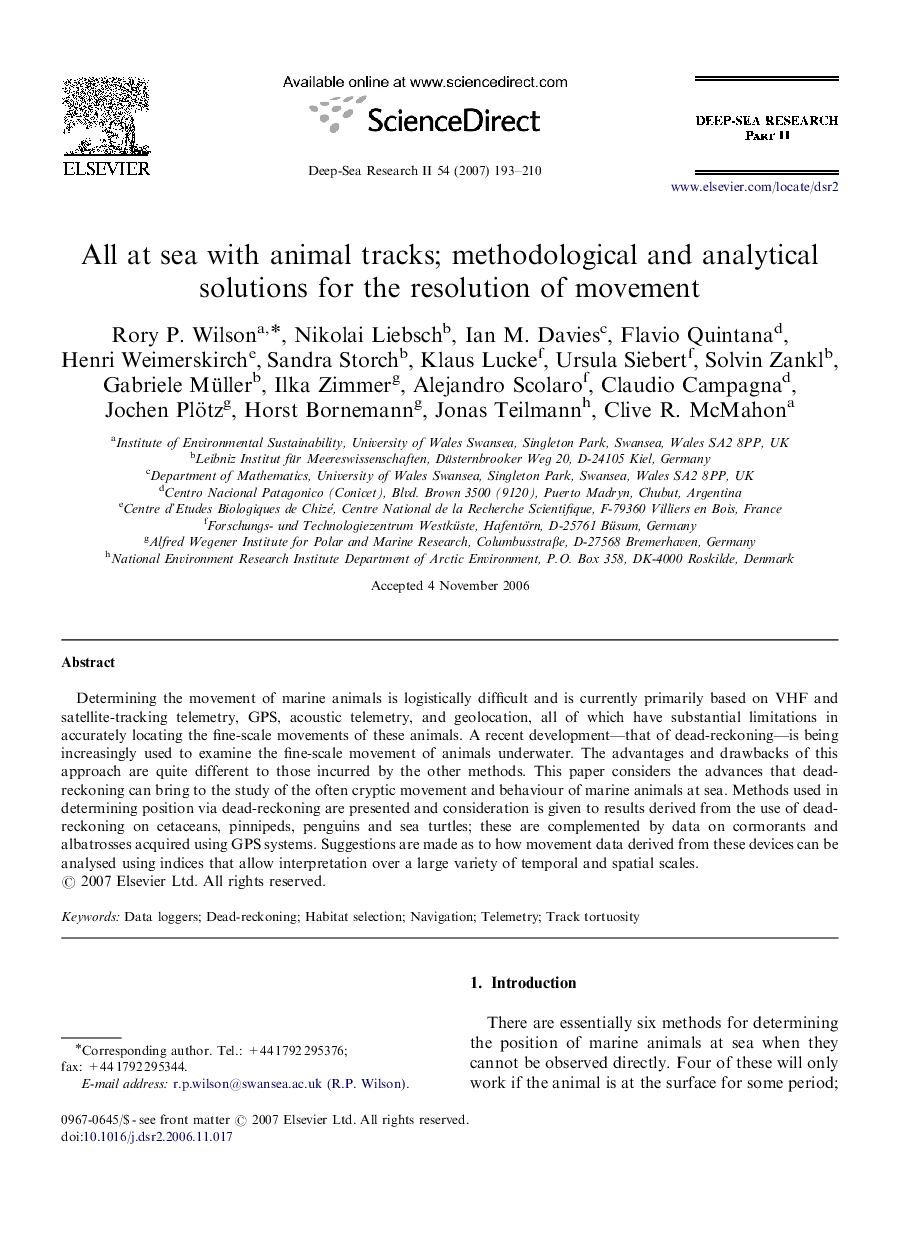| Article ID | Journal | Published Year | Pages | File Type |
|---|---|---|---|---|
| 4538120 | Deep Sea Research Part II: Topical Studies in Oceanography | 2007 | 18 Pages |
Determining the movement of marine animals is logistically difficult and is currently primarily based on VHF and satellite-tracking telemetry, GPS, acoustic telemetry, and geolocation, all of which have substantial limitations in accurately locating the fine-scale movements of these animals. A recent development—that of dead-reckoning—is being increasingly used to examine the fine-scale movement of animals underwater. The advantages and drawbacks of this approach are quite different to those incurred by the other methods. This paper considers the advances that dead-reckoning can bring to the study of the often cryptic movement and behaviour of marine animals at sea. Methods used in determining position via dead-reckoning are presented and consideration is given to results derived from the use of dead-reckoning on cetaceans, pinnipeds, penguins and sea turtles; these are complemented by data on cormorants and albatrosses acquired using GPS systems. Suggestions are made as to how movement data derived from these devices can be analysed using indices that allow interpretation over a large variety of temporal and spatial scales.
